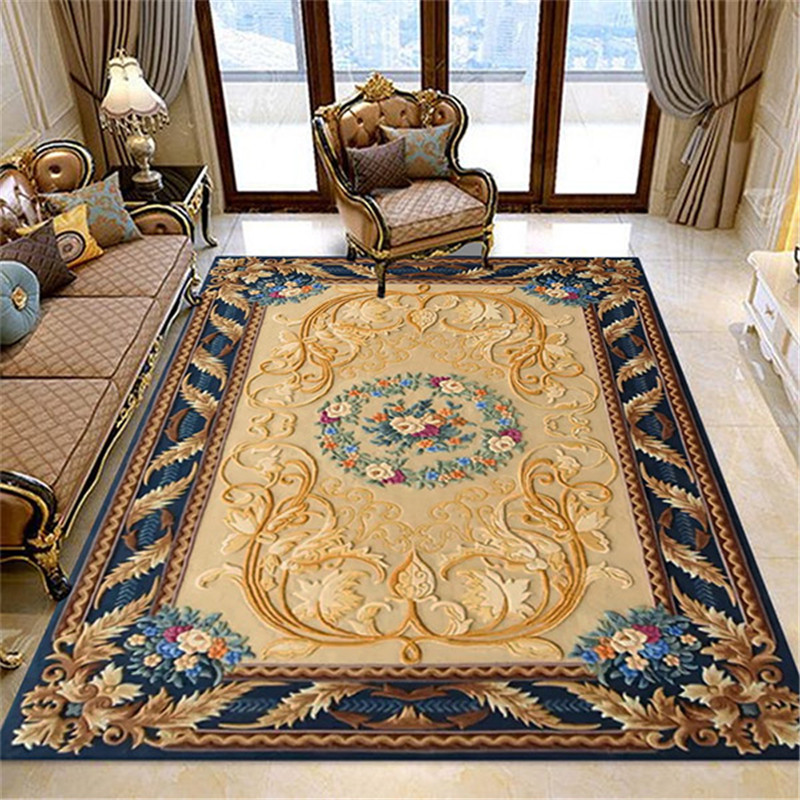Hand-tufted carpets have gained popularity for their affordability, variety, and aesthetic appeal. However, the decision to install a hand-tufted carpet should consider various factors including durability, maintenance, cost, and environmental impact. This article explores these aspects to help determine if hand-tufted carpets are worth installing in your home or office.
Craftsmanship and Aesthetics
Hand-tufted carpets are created using a hand-operated tool that punches strands of wool or synthetic fibers through a canvas backing. This method allows for intricate designs and a wide range of colors, making them a versatile choice for different interior styles. The craftsmanship involved in making hand-tufted carpets gives them a more personalized and artistic touch compared to machine-made options. They can mimic the appearance of hand-knotted rugs at a fraction of the cost, offering an elegant aesthetic without the high price tag.
Cost-Effectiveness
One of the most significant advantages of hand-tufted carpets is their affordability. They are generally less expensive than hand-knotted rugs because they require less time and labor to produce. For homeowners on a budget, this makes hand-tufted carpets an attractive option. Despite their lower cost, they still offer a luxurious look and feel, making them an excellent choice for those wanting to enhance their living space without breaking the bank.
Durability and Longevity
The durability of hand-tufted carpets depends on the quality of materials used and the environment in which they are installed. High-quality wool hand-tufted carpets can last up to 10-15 years with proper care, while those made from synthetic fibers might have a shorter lifespan. These carpets are generally well-suited for low to moderate traffic areas such as bedrooms, living rooms, and offices. However, in high-traffic areas like hallways and entryways, they may show signs of wear more quickly compared to hand-knotted or machine-made rugs.
Maintenance and Care
Hand-tufted carpets require regular maintenance to keep them looking their best. They should be vacuumed regularly to prevent dirt and debris from settling into the fibers. Spills should be cleaned promptly to avoid stains. Over time, the latex backing that holds the tufts in place can degrade, particularly in humid environments. This can lead to shedding and reduced lifespan. Professional cleaning is recommended periodically to maintain the carpet’s appearance and longevity.
Environmental Considerations
When considering hand-tufted carpets, it’s essential to think about their environmental impact. Wool hand-tufted carpets are a more sustainable choice compared to synthetic options, as wool is a renewable resource and biodegradable. However, the production process still involves the use of latex and other chemicals, which can have environmental repercussions. If sustainability is a priority, look for hand-tufted carpets made from natural materials and manufactured by companies committed to eco-friendly practices.
Conclusion
Hand-tufted carpets can be a worthwhile investment for many homeowners due to their affordability, aesthetic appeal, and versatility. They offer a luxurious look that can enhance the decor of any room without the high cost associated with hand-knotted rugs. However, potential buyers should consider the specific use case, as these carpets are best suited for low to moderate traffic areas and require regular maintenance. For those who value sustainability, choosing wool over synthetic fibers and seeking out eco-friendly manufacturers can mitigate some environmental concerns. Ultimately, whether hand-tufted carpets are worth installing depends on individual priorities regarding budget, durability, aesthetics, and environmental impact. With thoughtful consideration, they can provide a stylish and cost-effective flooring solution.

